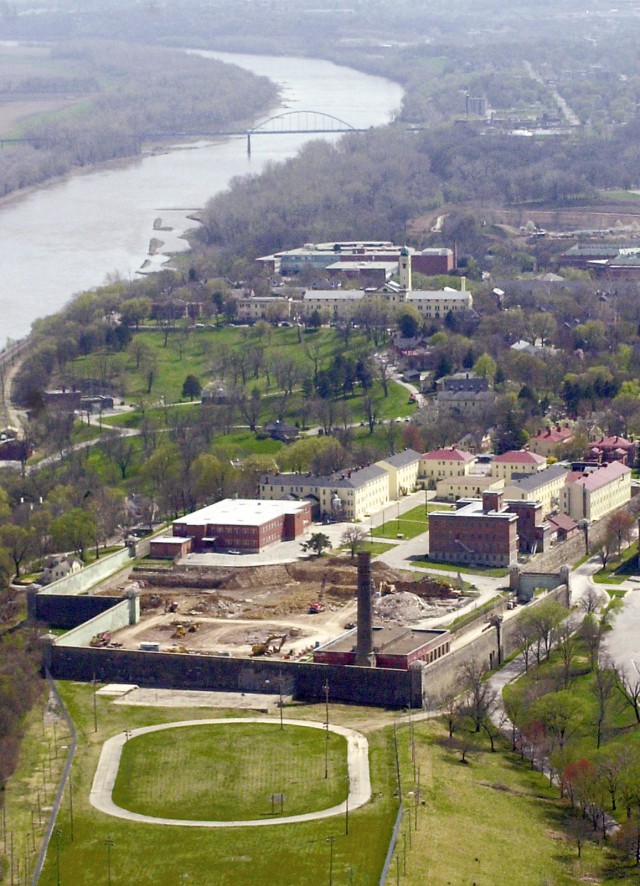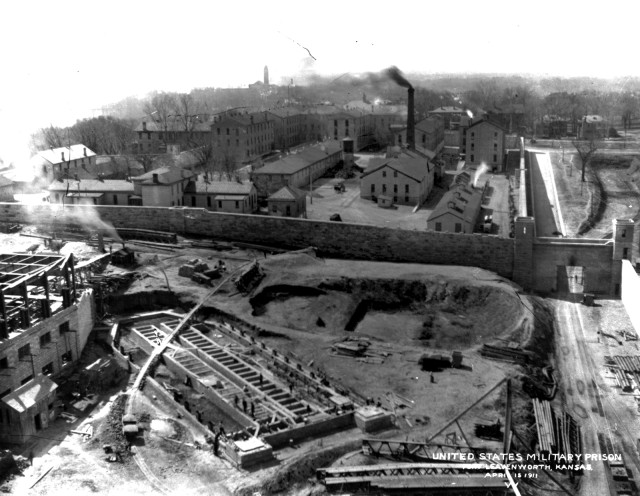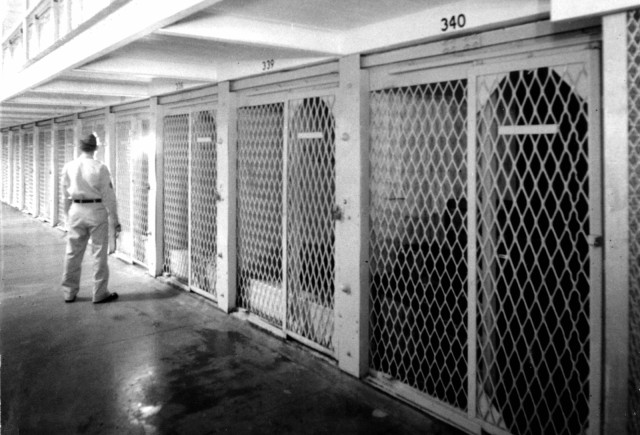FORT LEAVENWORTH, Kan. (Feb. 11, 2010) - The first time Peter Grande saw the U.S. Disciplinary Barracks was in 1975. It was at the end of a particularly long mission, escorting 26 military inmates traveling by air from Mannheim, Germany, to Fort Dix, N.J., then by train from Trenton, N.J., to Kansas City, Mo.
And while he was impressed by sight of the historic military prison, the then-enlisted correctional specialist was just happy to have completed the mission without serious incident.
Grande would not see the Castle or Fort Leavenworth again for about 22 years. In that time, he earned his commission through Officer Candidate School and had served in a number of command and staff positions at military police correctional units in Germany, Fort Knox, Ky., and in Kosovo.
A self-described "history lover and pack rat," Grande collected bits of military corrections history at each of his assignments.
When he returned to be the USDB's chief of staff in 1999, he found the mother lode of nearly a century of military corrections history, but most of it was disorganized and unmarked, Grande said.
"The hard part is organizing the photographs," Grande said. "They were unlabeled and in boxes."
Working with post and local historians, the archives at the Frontier Army Museum and local retirees who worked at the USDB over the years, Grande worked in his spare time to piece together the history of the USDB. The project continued after he retired from the Army as a lieutenant colonel and remained the USDB's chief of staff.
Grande has always toyed with the idea of publishing some of his discoveries in a book, but didn't start working on it in earnest until 2008, when another local historian published a photographic history of the U.S. Penitentiary Leavenworth - the infamous "Big House," nestled into Fort Leavenworth's southern boundary.
"Ken LeMaster's book motivated me to do it," Grande said. "When his came out, I knew I had to do it."
"Images of America: United States Disciplinary Barracks" is a photographic history of the USDB Grande compiled and wrote for the same publisher as LeMaster, Arcadia Publishing.
The book traces the USDB's history from its beginnings as a quartermaster depot, through the construction and eventual demolition of the "Castle," and the USDB's move to its present location on the north end of Fort Leavenworth. The book features mostly photos never seen by the public, including images taken inside the new USDB. There are also sections on the USDB Farm Colony and Greenhouse, as well as other rehabilitation programs throughout the years.
Though the USDB gave thousands of tours over the years, Grande's book takes readers into areas that even many USDB staff members never saw.
The book doesn't shy away from the many mysteries of the USDB, including the unmanned tower in the old USDB that many believe is haunted, and the origin of the electric chair, which was installed in Eight Base of the Castle, but never used. When the Castle was demolished, Grande said, the electric chair was removed from its cell-sized room and donated to the Military Police Museum at Fort Leonard Wood, Mo.
Grande said he is already working on another book on the history of the USDB.
"I have a long-term project in mind," he said. "I want to break it down by chapters with each one covering a commandant."
He has been collecting information on the past 49 commandants - including the five civilian commandants from the period when the USDB reverted to federal control - and what happened at the USDB during each of their tenures. To gather information for the book, he has interviewed and surveyed former commandants and their surviving spouses, as well as scoured archives for information.
While the next book may be years away from being published, Grande's current book is available at the Frontier Army Museum Gift Shop and several other local bookstores, as well as through the major chain and online booksellers.
All royalties he gains from book sales will be donated to the Military Police Memorial Grove at Fort Leonard Wood, Grande said.
Grande will also give a presentation on the history of the USDB at the Frontier Army Museum at 7 p.m. Feb. 18 as part of the Fort Leavenworth Historical Society's monthy speakers series. He will also be signing copies of "Images of America: United States Disciplinary Barracks" at the grand opening the 12th Brick Grille, a restaurant in a renovated section of the old USDB from 2-4:40 p.m. Feb. 19. Both events are open to the public.






Social Sharing